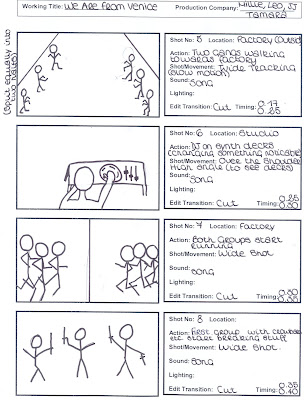Camera Test; We looked through the list of students through out the school and we hand picked 10 students, female and male. We asked each of them to play a character in our pop video and invited them to the studio later in the week for a camera test. All the students we had picked fitted the look that we needed for our video, but camera testing every one is crucial because many people do not 'look good' on film. We were looking for people who were confident in front of the camera. They should be expected to move well, with dramatic facial expressions and a rebellious persona. Initially, the problem was finding 'gangsters' within school. We did not want to create a generic product, but a 'real gangter'. Luckily for us, many students study drama and with the use of costumes we can emphasise appearances and perceptions of each character. Most of the students turned up for the camera testing...We shot them from a wide-shot and a close-up of their faces to ensure that they fitted our criteria of the character. Fortunately, all of the students are pleasent and seem like they will take good criticism on the day and listen to the specific requirements for their character. OUR CAMERA TEST IS ATTACHED BELOW.

Design Plans; The plan allowed us to overview our ideas of shooting in the studio and the derelict factory externally from school. We drew out a birds-eye-view plan of the studio lighting and positions. For the studio plan, we drew out the DJ and the 'decks' in the center, with the curtain and graffiti wall. We planned to place two white spot lights lighting up the wall, and another facing directly up to the DJ. We hope that the shilloutes and shadowing will create a large emphasise of the image and message. It may even add a theme of mystery through darkness. To the right is a scan of our lighting and set plan. With using an external location, we only had to plan our lighting and set for the studio.
CAMERA TEST
These images show the similar equipment that we will be using for our video...







